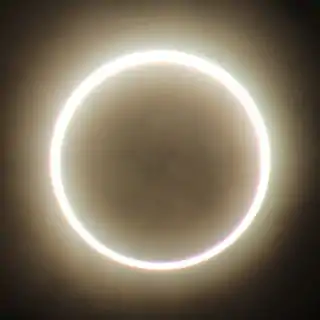| Solar eclipse of October 15, 2069 | |
|---|---|
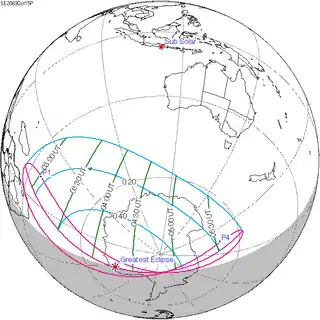 Map | |
| Type of eclipse | |
| Nature | Partial |
| Gamma | −1.2524 |
| Magnitude | 0.5298 |
| Maximum eclipse | |
| Coordinates | 71°36′S 5°30′W / 71.6°S 5.5°W |
| Times (UTC) | |
| Greatest eclipse | 4:19:56 |
| References | |
| Saros | 125 (57 of 73) |
| Catalog # (SE5000) | 9664 |
A partial solar eclipse will occur on October 15, 2069. A solar eclipse occurs when the Moon passes between Earth and the Sun, thereby totally or partly obscuring the image of the Sun for a viewer on Earth. A partial solar eclipse occurs in the polar regions of the Earth when the center of the Moon's shadow misses the Earth.
Related eclipses
Solar eclipses 2069–2072
This eclipse is a member of a semester series. An eclipse in a semester series of solar eclipses repeats approximately every 177 days and 4 hours (a semester) at alternating nodes of the Moon's orbit.[1]
| 120 | April 21, 2069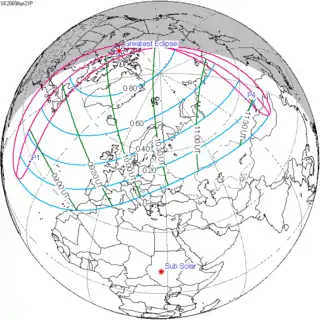 Partial |
125 | October 15, 2069 Partial |
| 130 | April 11, 2070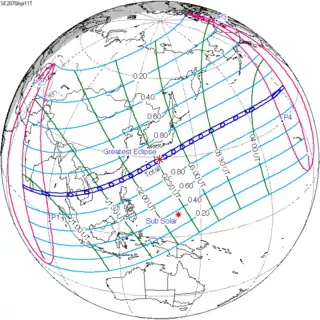 Total |
135 | October 4, 2070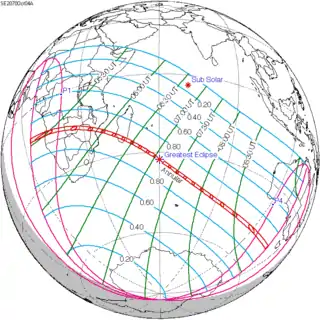 Annular |
| 140 | March 31, 2071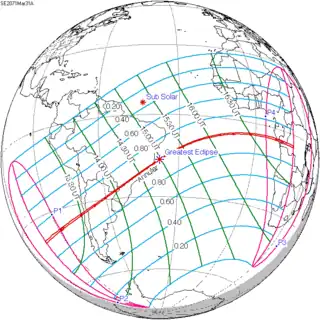 Annular |
145 | September 23, 2071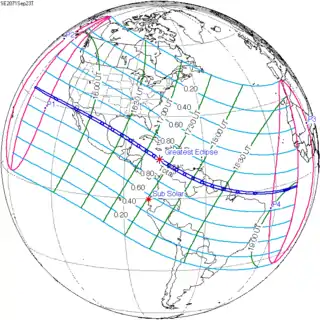 Total |
| 150 | March 19, 2072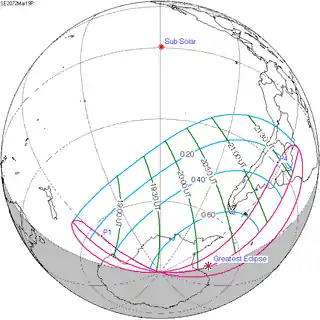 Partial |
155 | September 12, 2072 Total |
References
- ↑ van Gent, R.H. "Solar- and Lunar-Eclipse Predictions from Antiquity to the Present". A Catalogue of Eclipse Cycles. Utrecht University. Retrieved 6 October 2018.
External links
- Earth visibility chart and eclipse statistics Eclipse Predictions by Fred Espenak, NASA/GSFC
This article is issued from Wikipedia. The text is licensed under Creative Commons - Attribution - Sharealike. Additional terms may apply for the media files.
.jpg.webp)
